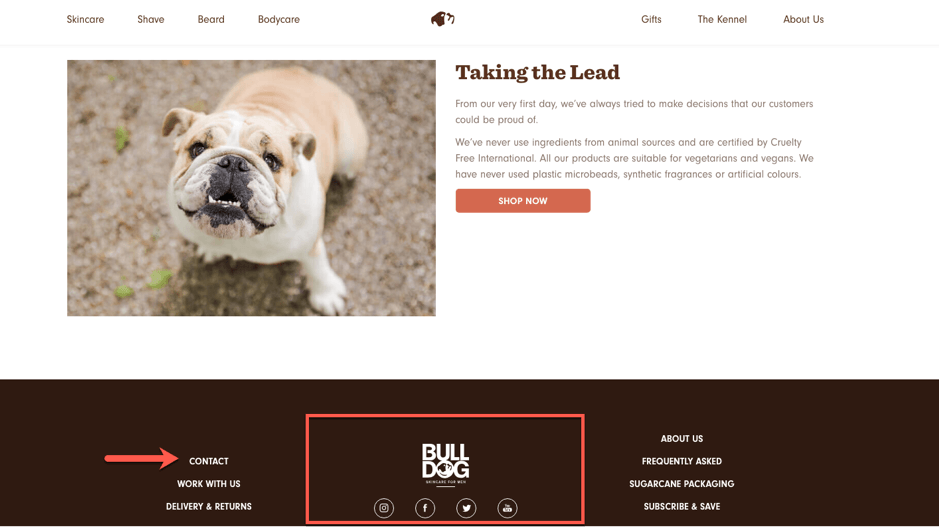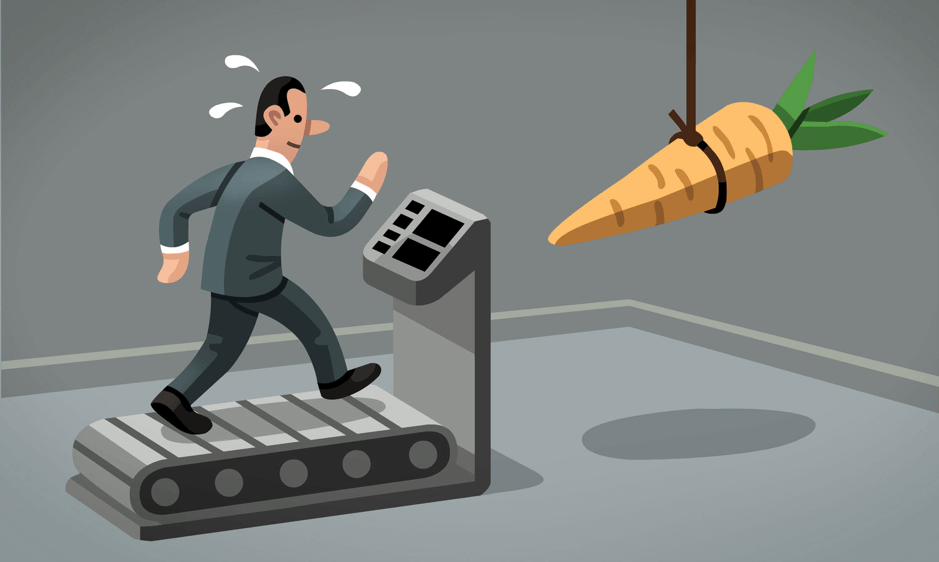Many successful online entrepreneurs, started their ventures as small marketplace sellers on different sites across the web. However, as success increases strategy tends to veer off in a different direction as the policies of the likes of Amazon and eBay stagnates growth and restricts further opportunity.
Owning your online store creates new growth without restriction. You control everything from which products you stock to the minute details of the customer experience.
But, for many, this freedom is tantamount to a child that being locked inside a sweet shop asking where to get stuck in first?
This blog covers how to create and retain customers, through to tips and hints on strategy, which will hopefully help you make the best of things online and show your competitors how it’s done.
Gorgeous Web Design
You could have an utterly groundbreaking product; the very best around by a country mile. You could have also won awards for the levels of quality customer service, but who cares if your website design sucks?
A recent online study claimed that as much of 93% of us are influenced by aesthetic aspects of a website in their decision to purchase a product or not.
To tap into this 93%, there are a few different options available to you:
A) Learn to Code
B) Pay a Designer
C) Using a Template
Learning to code, while rewarding, can take a long time to learn and paying a designer can be very expensive – mainly if you want the best. Using a template is probably the best option, particularly if you’re a beginner, and you can find all sorts of customisable templates that can be easily tailored to meet your needs.
Mobile-First Is Here
Over half of internet traffic now comes from a mobile device, and 59% of UK mobile users, used their device to purchase a product in 2017.
These kinds of figures serve to show why Google now prioritises mobile-indexing over that of the desktop. And as a store owner, you’d be incredibly foolish to ignore the influence of mobile.
Ensuring your site is mobile-friendly means that when users land on the site, they’re greeted with a website that functions perfectly on their device and they don’t have to scroll for forty-five minutes to get to the bottom of the page – in fact, most people won’t even get that far.
Studies show that users will only stick around on a web page for up to 15-seconds, which means if your site isn’t functioning correctly on their device, they’ll be no hesitations in clicking the back button and looking for a website that will fulfil their needs.
Appropriate Site Structure
Keeping things clean and tidy is a good rule of thumb for just about anything in life. Keeping your website architecture logical and immaculate is suitable for both visitors and for search engines.
You wouldn’t expect to step into a physical store only to discover that all the products are just where you wouldn’t expect them to be. Think about when you go to a supermarket, and you notice that someone has dumped a cabbage on their shelves where the fizzy drinks are – it’s immediately noticeable. And that’s because you know it’s not supposed to be there, you have this idea in your head of how things are meant to be, and if things deviate from this conception, it can be more than a little disorientating.
Structuring your website in the right way means that everyone knows what to expect and everything falls within the parameters of the way a visitor expects things to be.
Tell Your Story
If someone lands on your website and heads across to the “About Us” page, then it means they already have some interest in what you do, and they’re looking for you to blow their socks off. You must tell them what you are, what you can offer and most importantly, why you do what you do. People often forget this point and its one that imparts your passion to a customer, ‘we do this because we’re passionate about good quality bacon.’ It doesn’t matter what the product is; it’s essential to communicate this point.
References of reputation and validity are also critical factors in a customer’s decision-making process. These are typically:
• Contact Details
• Address
• Social Accounts
Not only is this good for visitors, but it’s also good for search engines as it can help to corroborate your identity in the search engines.
There’s a balancing act at play on an About Us page, though. Too much information can just serve to confuse a user. Sit down and try to understand what you’d expect to see if you were looking through a buyer’s eyes.
A great example is the about us page on the Bull Dog skin care range website:
As you can see it’s super clear and simply mapped out, with obvious links to contact and social pages and a connection to their branding.
Support Your Customer
Your customers need to feel as though you have their back, and that you’re there should they need a helping hand. Offering after-sales support and offering them advice and guidance before the fact can help to solidify your relationship; turning them into a long-term customer.
Live chat features are pretty much the norm these days, and for a good reason.
The best chat features are those which offer round-the-clock support, which is something you should try to provide where possible.
Even if you can only support the feature for the busy traffic periods of the day, then you’re still offering something to your buying public, and according to web guru Neil Patel, you could increase your conversion rate by up to 45%.
Utilise Content Marketing
Adopting content marketing using your website’s blog is a golden opportunity to generate more traffic. Strategic posts that make the most of your keywords, combined with helpful information that could help a customer is likely to do well in the SERPs and creates the first stepping stone towards a purchase.
Blogs are also a medium in which to connect with your audience. Offering something useful for a reader rather than merely sales heavy content, can help your company to create a reputation of expertise with your readership that convinces them that you’re the company for them.
Track & Analyse
You can’t expect to improve your website and roll-out successful growth strategies unless you’re keeping a close eye on the data. By far-and-away, the best tool for this is Google Analytics. This free tool provides website owners will find a whole manner of data, such as website visits, revenue and product sales.
Routinely investigating the data gives you the opportunity to understand what worked and ultimately what didn’t and from here you can plan your long-term strategy around the things that worked for the business while avoiding those that didn’t.
Incentives
As we mentioned online store owners aren’t limited to the constraints that are put onto marketplace sellers, which means they have far more freedom in the way they operate. Seizing the initiative and offering incentives such as free deliveries is a great way to push potential buyers to purchase from you.
Thanks to online marketplaces like Amazon, free delivery has become an expectation, and the added costs associated with delivery can easily push a customer to look elsewhere. It may well be the case that free deliveries will hurt your margins at first, but many sellers often find that they can mop up the customers that have been put off by the delivery costs of competitors.
Competition
Customers browsing through online stores are always searching for the best offers and a shopping experience that will come them returning time-after-time. Keeping an eye on what the competition is doing provides you with valuable knowledge and will help you to understand what they’re doing to gain and ultimately, retain customers.
Ask yourself:
• What are they doing differently?
• What are they doing that’s the same?
• Where can they improve?
• Where can I improve?
Assessing what is helping take competitors to the next level enables you to understand how you can take the components of their business model to polish it and improve it for your own store.
Appearance Is Everything
We’ve been told since the beginning of time to ‘never judge a book by its cover,’ but us humans are very visually focused, and when it comes to what we’re spending our money on, the appearance of a product means everything.
Our unconscious leaning towards visual images means that clear and well-taken product photography is the only option. Poorly optimised images aren’t likely to convince anyone to purchase from you over your competitors, even if the product is the same.
Displaying multiple angles of the product shows the product off in all its glory and gives the customer a chance to understand the look and feel of a product that they are otherwise unable to pick up and inspect for themselves; meaning you have to do a lot of the legwork for them.
Leverage Your Following
Peer-to-peer marketing on social media channels is an incredibly powerful strategy. Public conversations about the products you’re pushing tells their friends you are who you say you are and you’ve got a great product to offer. This is called ‘social proof’ – a psychological event in which people conclude that the behaviour of others reflects socially accepted, correct behaviour.
As we’ve mentioned your online customers can’t see your products in-person, so they consider what others have to say about your business as a marker of integrity.
Leverage your social channels to create buzz around your products by encouraging comments and shares. You should also introduce social sharing icons to every product page to accommodate a customer should they wish to share your product with someone else who might be interested.
Social advertising is a powerful way to connect with an audience in an informal, creative way.
Email Marketing
Email marketing is a good way for ecommerce store owners to build relationships with their customers. Store owners can send out emails to targeted sections of their customer base to appeal to their specific needs, which can encourage sales and therefore revenue.
Firstly, you’ll need to collect the emails of buyers and make sure they are happy to receive your correspondence. There are plenty of opportunities to ask them to opt-in – a process which has been at the forefront of digital talk in 2018 – such as after they’ve completed a purchase or even a banner on your home page.
Not everyone will sign up to your email list, but the positive thing is that the ones who do sign up are actively waiting to see what you can offer them, which means you have a whole list of captivated buyers just waiting to pull the trigger.
Be Clear With Refund & Money-Back Guarantees
Buying a product online always comes with a slight risk. As a customer, there’s quite rightly an expectation that the item-in-question is up to the standards one expects. Most visitors won’t opt to purchase your product if there’s no returns policy or one which doesn’t offer much leeway in the returns process – this is especially true for clothing products.
As a merchant, you can build up trust by offering clear and generous returns and money-back policies. This tells customers that you’re confident in your product and if something isn’t up to their standards, then you’re willing to find a solution that is.
Create Your Own Success
Online stores give their owners complete liberty over everything that happens on the site – which means it could effectively go one of two ways. Instead of being governed by the rules of the likes of Amazon or eBay, a seller can effectively curate their own success story.
By utilising the options that have been laid out in this blog, a store owner can perfect the customer journey, encourage conversion and drive revenue. Creating a store that closely aligns with what your customers are expecting you can take the edge away from your competitors.
This article is brought to you by ALT Agency and special guest author Dale Bonsor. Dale is an SEO Consultant at poddigital.co.uk – the ECommerce SEO Specialists.



 Nov 16, 2018
Nov 16, 2018 











 Contact us
Contact us 
